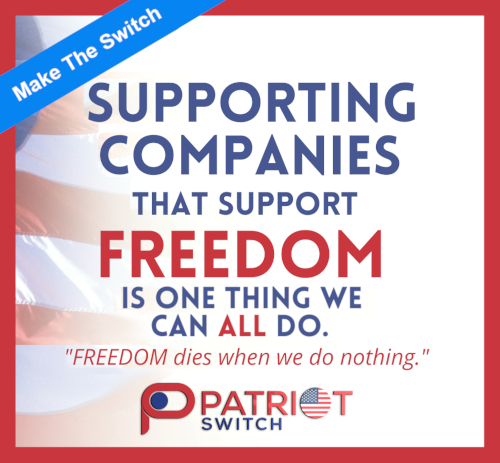Inflation may finally be retreating as price increases on wholesale items continue to slow in line with recent consumer inflation trends.
Inflation faced by suppliers, as measured by the Producer Price Index, rose 6.2% in December from a year prior, marking the slowest annual pace since March 2021 according to new data released today by the U.S. Bureau of Labor Statistics.
December’s PPI was nearly a percentage point lower than November’s revised 7.3% increase and significantly below March 2022’s pace of 11.7%, the fastest pace on record. Beating expectations of economists surveyed by the Wall Street Journal, who were looking for a 0.1% decline, the 6.2% rate sent stocks rallying early before plummeting on disappointing retail sales.
On a month-to-month basis, the PPI slowed by half a percentage point in December (seasonally adjusted). This is the first monthly decline since August of last year and followed 0.2% and 0.4% increases in November and October, respectively.
Over the past few months, the PPI, like the Consumer Price Index (CPI), has been rising less slowly, offering hope that bruising near 40-year-high inflation may have peaked this summer. However, it’s still too early to draw that conclusion.
The biggest driver of falling inflation for both wholesale and consumer prices are plunging oil and energy prices. The PPI’s final demand energy index fell 7.9% in December. Falling energy prices ease costs on the delivery of goods and services.
The final demand food index declined 1.2%. However, core inflation readings, which exclude volatile energy and food costs, provide a better gauge of price pressure on other goods and services in the economy. Last month, the core PPI measure rose just 0.1% from the previous month compared to 0.3% in November. Compared to the year prior, core PPI was up 4.6% following a 7% rise in 2021.
This retreat in producer inflation should be an encouraging sign to manufacturers and businesses. Even more, as they adjust plans for the rest of 2023, they may be able to look ahead with hopes of improving economic conditions. This comes not a moment too soon for many small businesses.
The National Federal of Independent Businesses (NFIB) Small Business Optimism Index fell to 89.8 in December, marking 12 consecutive months below the 49-year average of 98, driven by inflation worries. Small business owners name price increases as the single most important business problem. Despite complaints about worker shortages, labor ranked a distant second place by 9 points.
Let’s not lose sight of the big picture even amidst this positive economic report. Inflation for businesses and consumers is still markedly higher than at the start of 2021. For over two years, businesses and households have endured price increases that have forced them to make painful decisions to stay afloat.
Of small businesses surveyed by the Chamber of Commerce last summer, 83% said rising prices have had a significant impact directly on their business. Most cited the cost of goods and supplies (65%) and utilities or fuel (50%). To cope, small businesses have raised their own prices, taken out a loan, reduced staff, or reduced the quality of their products or services. At the end of the day, consumers are left worse off by paying more for reduced quality or service.
Nonetheless, consumers have shown remarkable resilience despite near historic inflation levels. However, the latest retail data suggests that inflation is wearing them down.
Retail sales fell 1.1% in December on both receding inflation rates and consumer demand. During the holiday shopping season–which should have been the busiest of the entire year– most retail categories reported losses. Department stores reported a 6.6% decline, furniture and home furnishings fell 2.5%, and online sales were down 1.1%.
For two years, Democrats in Washington banked on supply-side fiscal policy propping up consumer demand to pull the U.S. economy out of pandemic-driven doldrums. They could have left the economy alone as it reopened and stood aside while demand and supply sorted itself out. Instead, they flooded households with generous and unnecessary cash benefits, which led to producer and consumer prices accelerating and outpacing those of other countries.
Certainly, personal savings rates spiked to record levels and, thankfully, served as a cushion against high grocery store and gas prices. But, paychecks shrank as wages for low and middle-income households could not keep pace with inflation. That was all well before Russian President Vladimir Putin invaded Ukraine and sent the energy markets into a tailspin.
The inflation balloon is floating back down thanks to the Federal Reserve’s aggressive rate hikes acting as pushpins. The balloon still has a long way to go before reaching the Fed’s targeted 2% rate.
In the meantime, businesses and households will have to accept the squeeze and tighten their belts another notch. Consumers and businesses are already bracing for a recession in 2023 by cutting back on discretionary spending — if they have any room left in their budgets. Ironically, a spending pullback is exactly what will lead us there.
Patrice Onwuka is director of the Center for Economic Opportunity at Independent Women’s Forum and co-hosts WMAL-FM’s morning show O’Connor & Company, the leading talk radio station in the DC area every Friday.
The views and opinions expressed in this commentary are those of the author and do not reflect the official position of the Daily Caller News Foundation.
All content created by the Daily Caller News Foundation, an independent and nonpartisan newswire service, is available without charge to any legitimate news publisher that can provide a large audience. All republished articles must include our logo, our reporter’s byline and their DCNF affiliation. For any questions about our guidelines or partnering with us, please contact licensing@dailycallernewsfoundation.org.
All content created by the Daily Caller News Foundation, an independent and nonpartisan newswire service, is available without charge to any legitimate news publisher that can provide a large audience. All republished articles must include our logo, our reporter’s byline and their DCNF affiliation. For any questions about our guidelines or partnering with us, please contact licensing@dailycallernewsfoundation.org.
- JOSH HAMMER: Mob Rule Is Taking Over The West - April 2, 2023
- JUDGE ANDREW P. NAPOLITANO: Trump Can Be His Own Worst Enemy - April 2, 2023
- SHOSHANA BRYEN: Here’s What Really Lies Behind The Biden Admin’s Icy Israel Relationship - April 1, 2023
JOIN US @NewRightNetwork on our Telegram, Twitter, Facebook Page and Groups, and other social media for instant news updates!
New Right Network depends on your support as a patriot-ran American news network. Donate now



